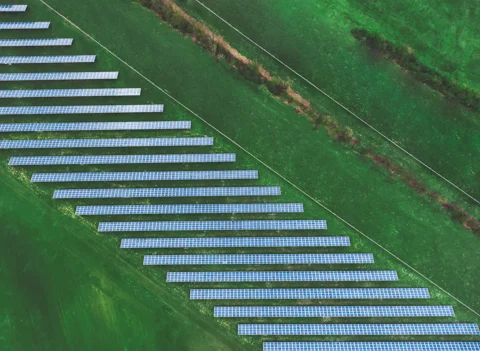Investor demand for corporate green bonds continues to be high, but the US market remains constrained by limited supply. Important challenges to further market development are limited sector diversity, the uncertainty related to qualifications and standards for green bonds, and the required size of an issuance to be potentially attractive to investors like APG.
demand for corporate green bonds continues to be high, but the US market remains constrained by limited supply. Important challenges to further market development are limited sector diversity, the uncertainty related to qualifications and standards for green bonds, and the required size of an issuance to be potentially attractive to investors like APG.
APG hit a milestone last month by reaching $1 billion in green, social and sustainable (‘green’) bonds in the US Credits portfolio. Nearly two-thirds of these holdings is corporate. ‘This is an indication that our efforts to grow issuance are yielding results’, says Ann-Marie Griffith, Managing Director Credits US. ‘But there is more work to be done. We must activate our peers and partners across the industry to stimulate issuance of US corporate green bonds.’
Based on a round-table discussion with 20 institutional investors and underwriters in the US earlier this year, APG offers the following suggestions that may contribute to solving these obstacles:
Communicate the benefits
Corporate issuers in the US tend to adopt a ‘wait and see’ attitude, as they perceive designing sustainability products that meet the potential investors’ needs to be too complex. Reputational and other benefits of green bond issuance are often not well communicated. Investors should stress the benefits of having broader, more diverse sources of funding. In addition, they can point out examples of successful green bonds from US municipal or quasi-governmental issuers like Fannie Mae.
Act as a sounding board
The absence of generally accepted criteria to define whether bonds are actually green is often perceived as an obstacle to green bond issuance. Yet it should be pointed out that much progress is being made in defining and classifying ‘green’ investments. APG’s Taxonomy on Sustainable Development Investments (SDIs) is a now fully operational framework that can be used to design products that meet investors’ sustainability needs. In addition, APG and other investors can act as sounding boards by engaging with potential issuers before issuance, providing feedback on proposed green bond programs and outlining investors’ expectations.
Pool green projects
Green bonds are exposed to the same underlying credit risk as regular bonds and are therefore subject to the same requirements in terms of risk, return and costs. In many cases, issuance is too small to be attractive to potential investors from a risk management perspective. Companies should explore ways to aggregate green and social projects to a size that would meet minimum index inclusion requirements. This would enable issuers to access funding for their smaller scale initiative and attract institutional buyers.
For APG, responsible investing is a way to improve the investment portfolio in terms of risk and return, and simultaneously contribute to a sustainable world on behalf of our clients and their participants. Investing in green and social bonds helps our clients achieve their sustainable ambitions; in particular it helps ABP and bpfBOUW double investments aligned with the UN Sustainable Development Goals (SDGs) by 2020. By the end of 2017, we had invested nearly € 4.5 billion in green bonds and since then this figure has increased further.
As a leading, long-term responsible investor, APG advocates for responsible, sustainable growth in the green, social and sustainable bonds market. We are a member of the Climate Bonds Initiative and contribute actively to initiatives aimed at expanding the size, scope and transparency of this market.



